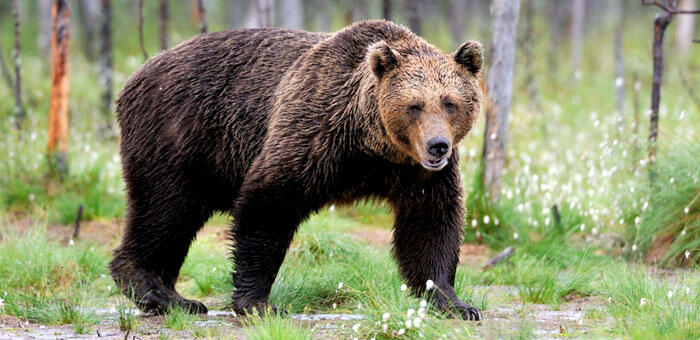Images captured in the Cantabrian mountains last week showed some of the bears were extremely thin and showed symptoms of cachexia, a wasting disease.
The Fund for the Protection of Wild Animals (Fapas) which monitors Spain’s population of brown bears said they were “extremely concerned” by the condition of the animals.
“Climatic conditions has caused complications for the bears this year, altering the natural life cycles that are so important to the survival of the bears,” said a statement from Fapas.
“A very dry summer has led to a poor and late harvest in fruits such as cherries and wild berries, which the bears rely on,” Fapas said.
As a result of the dearth of the bears’ natural food resources, the naturally shy animals have been forced to leave the isolated mountain valleys where they thrive and forage in areas populated by humans.
“It means there are more reports of damaged bee hives as hungry bears seek out honey.”
They are also more likely to raid fruit orchards. “The depopulation of rural mountain areas provides bears with a magnificent opportunity to forage in the old orchards of abandoned farms where apple, pear, plum and hazelnut trees still produce fruit,” said Fapas.
There are an estimated 280 brown bears in Spain, mainly in forest-rich Asturias and the Pyrenees mountains on the French border, according to conservation group Fundacion Oso Pardo (“Brown Bear Foundation”).
But their presence on farms can antagonise locals and last month a brown bear was found shot in the chest at the edge of the Muniellos Nature Reserve in the northern region of Asturias.
Male bears weigh as much as 350 kilos (770 pounds) and females 200 kilos, and they can easily outrun a human. Rearing up, they stand up seven feet (two metres) tall.
If the bears are not sufficiently fattened up before their winter hibernation they may not survive.
Source: The Local











